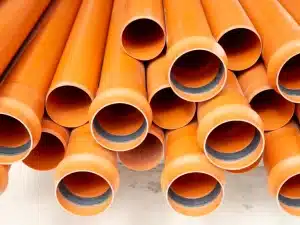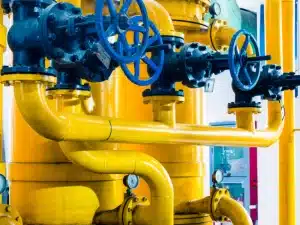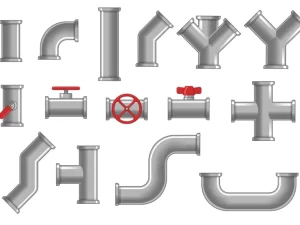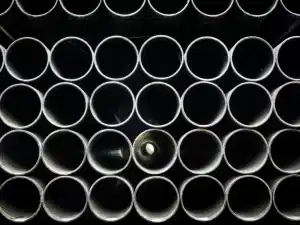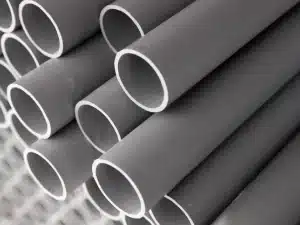7 Types of Gas Valves Used in the Oil & Gas Industry
Valves are indispensable tools in the oil and gas industry, managing fluid movement, pressure, and flow direction within pipelines and equipment. They ensure seamless operations, uphold safety standards, and minimize risks during complex industrial processes. Without reliable valves, achieving operational efficiency and maintaining system integrity would be challenging. Let’s discuss seven common oil and gas valves, their design, benefits, drawbacks, and typical uses. By understanding these valves, you’ll see how they contribute to efficient and safe operations in the industry.
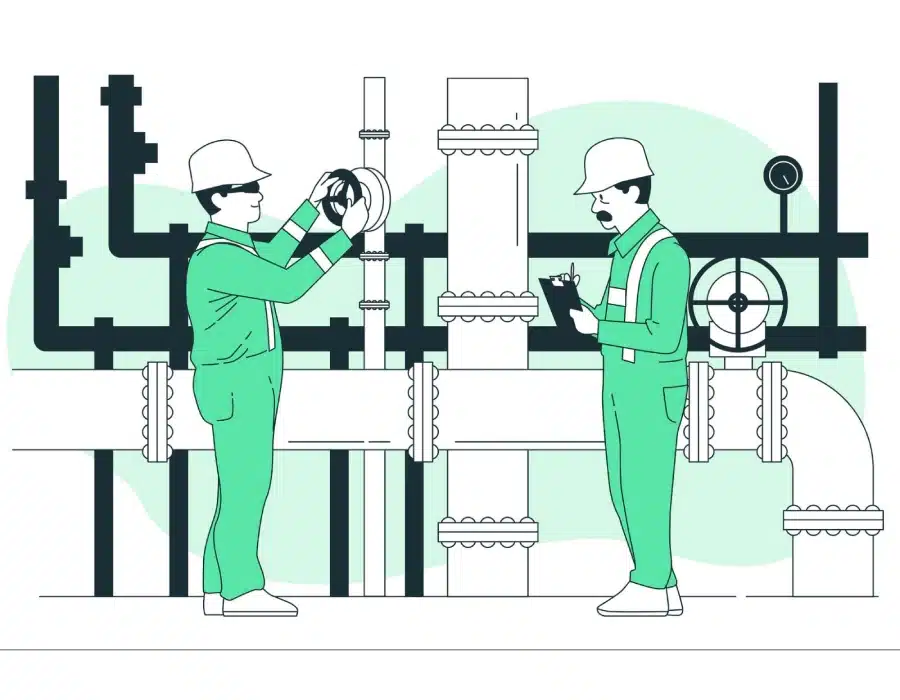
1. Gate Valve
Design and Operation
Gate valves have a flat or wedge-shaped barrier (called a gate) that moves up and down to open or close and control fluid flow. The valve is fully open when the gate is lifted, and the fluid flows freely. When the gate is placed down, the flow is blocked completely.
- Provides a tight seal, ensuring no leakage
- Minimal pressure drop when fully open, maintaining efficient flow
- Suitable for on/off control, making it ideal for isolation purposes
Limitations
- It is not ideal for throttling applications, as it can cause damage to the valve
- Slow operation compared to other valve types, which can be a drawback in time-sensitive situations
Typical Applications
Gate valves are often used in pipelines where a straight fluid flow is needed with little resistance. They are also widely used in the oil and gas industry to isolate sections of pipelines.
2.Globe Valve
How Does It Work?
Globe valves feature a round body with a movable disk and a fixed ring-shaped seat to regulate fluid flow. When the valve is turned, the disk moves up or down, allowing precise control over the amount of liquid or gas passing through. This makes globe valves ideal for applications that require accurate flow adjustment.
Key Benefits
- Excellent throttling capability, allowing for precise control of fluid flow
- Good shut-off characteristics, ensuring a tight seal when closed
- Suitable for frequent operation, making it reliable for systems that require regular adjustments
Drawbacks
- Higher pressure drop compared to gate valves, which can affect system efficiency
- More complex design, leading to potentially higher maintenance requirements and costs
Common Uses
Globe valves are often used in applications requiring precise flow control, such as in cooling water systems, fuel oil systems, and the oil and gas industry. They are also commonly found in systems where frequent operation and adjustments are necessary, providing reliable performance in various industrial settings.
3. Ball Valve
Design and Features
Ball valves consist of a round ball with a hole through it. When the ball is turned, the hole lines up with the flow, letting fluid pass through. Turning the ball 90 degrees closes the valve, making it a quick and easy way to control fluid flow. This simple design makes ball valves reliable and easy to use.
Pros
- Quick to open and close, making them ideal for emergency shut-off situations
- Provides a tight seal, ensuring no leakage and maintaining system integrity
- Low-pressure drop, which helps maintain efficient flow rates
Cons
- Not suitable for throttling, as partial opening can cause damage to the valve
- It can be more expensive than other valve types, which may impact budget considerations
Where Does It Shine?
Ball valves are perfect for situations where a strong seal and fast operation are needed. They are commonly used in the oil and gas industry, where their durability and efficiency are highly valued. A reliable ball valve supplier will provide various options to meet specific needs, ensuring a suitable ball valve for every application.
4. Check Valve
Purpose and Mechanism
Check valves that let fluid flow in only one direction, stopping it from flowing backwards. They work automatically, with the fluid opening the valve and the reverse flow closing it. This mechanism ensures the system remains protected from reverse flow, which can cause damage or contamination.
Advantages
- Prevents backflow, protecting equipment and maintaining system integrity
- Simple design, which makes them easy to set up and use
- Low maintenance, meaning less need for frequent repairs and lower costs
Considerations
- Not suitable for pulsating systems, as the constant changes in flow direction can cause wear and tear
- It can cause water hammer if not properly selected, leading to potential damage and noise in the system
Applications
Check valves to prevent backflow and ensure unidirectional flow in various applications, including water and wastewater systems, chemical processing, and the oil and gas industry. They are essential in systems where maintaining a consistent flow direction is critical for safety and efficiency.
5. Butterfly Valve
Butterfly valves have a disk that spins around a central point to control fluid flow. The disk sits in the middle of the pipe, and a rod connects it to a controller outside the valve. This design allows for fast and easy flow control with little resistance.
Positives
- They are small and light, making them easy to install and manage.
- Quick to operate, allowing for rapid opening and closing
- Suitable for large volume flows, ensuring efficient fluid management
Negatives
- It is not suitable for high-pressure applications, as the disk can deform under extreme pressure
- Limited throttling capability, which may not provide precise flow control
Where They’re Used
Butterfly valves are often used when large amounts of fluid need to be controlled, such as in water systems, heating and cooling systems, and the oil and gas sectors. Their compact design and quick operation make them ideal for systems where space is limited and rapid flow control is essential. They are also favoured in applications where weight is a concern, such as in large-scale piping systems.
6. Plug Valve
Mechanism
Plug valves have a cylinder or cone-shaped plug with a hole in the middle. The plug turns inside the valve to control the fluid flow. When the hole lines up with the flow, the valve opens, letting the fluid pass through. Rotating the plug 90 degrees closes the valve, effectively stopping the flow.
Advantages
- Easy design, making them simple to understand and use.
- Quick to operate, allowing for rapid opening and closing
- Provides a tight seal, ensuring no leakage and maintaining system integrity
Drawbacks
- It can be difficult to operate in high-pressure systems, as the plug may require significant force to turn
- Needs regular maintenance to keep it working smoothly and avoid damage.
Industry Uses
Plug valves are used in chemical, water, and oil and gas industries for controlling the flow and diverting it when needed. Their robust design and quick operation make them suitable for applications where reliable and efficient flow control is essential. They are particularly valued in systems where limited space and a compact valve solution are needed.
7. Needle Valve (Alternate Option / Bonus Mention)
Design
Needle valves have a slender, tapered point at the end of a valve stem. The needle moves in and out of a seat to precisely control fluid flow. This design allows for very fine adjustments to the flow rate, making needle valves ideal for applications where precise control is essential.
Applications
Needle valves are used in applications requiring precise flow control, such as in instrumentation and sampling lines in the oil and gas industry. They are also commonly found in laboratory settings, hydraulic systems, and other environments where accurate flow regulation is critical. Their ability to provide fine control makes them invaluable in processes that demand high precision and reliability.
Factors to Consider When Choosing a Gas Valve
Pressure and Temperature Requirements
When selecting oil and gas valves, consider your application’s pressure and temperature conditions. High-pressure and high-temperature systems require robust valves that can withstand extreme conditions.
Flow Control vs. On/Off Isolation
Determine whether your application requires precise flow control or simple on/off isolation. Globally, valves are ideal for throttling, while gate and ball valves are better suited for on/off control.
Material Selection
Choose valve materials that work well with the fluids and the environment, such as stainless steel, carbon steel, and different types of alloys.
Standards and Certifications
Make sure the valves meet industry rules and certifications, like API, ANSI, and ISO, to ensure safety and dependability.
Maintenance and Life Cycle Cost
Consider the valves’ maintenance requirements and life cycle cost. Investing in high-quality valves can reduce maintenance costs and extend the life of your system.
Conclusion
Understanding the different oil and gas valves and their specific applications is crucial for optimizing the performance and safety of your operations. Choosing the right valve for your needs helps make sure your system is durable and reliable.
FAQs
What are the different types of valves?
Common valves, including gate, globe, ball, check, butterfly, plug, and needle valves, are essential in various industries. Specifically, oil and gas valves are designed with unique features to meet the demands of the oil and gas sector, ensuring reliable performance for different applications.
What are the uses of valves?
Valves control fluids’ flow, pressure, and direction in various systems, including water distribution, chemical processing, and the oil and gas industry. In particular, oil and gas valves are designed to handle the specific demands of the sector, ensuring safe and efficient operation.
What are the 4 types of heart valves?
The four types of heart valves are the aortic, mitral, pulmonary, and tricuspid. These valves control blood flow in the heart and ensure it moves in the correct direction. Similarly, a ball valve supplier provides a range of ball valves used to regulate fluid flow in various systems, offering precise control like heart valves do in the circulatory system.

